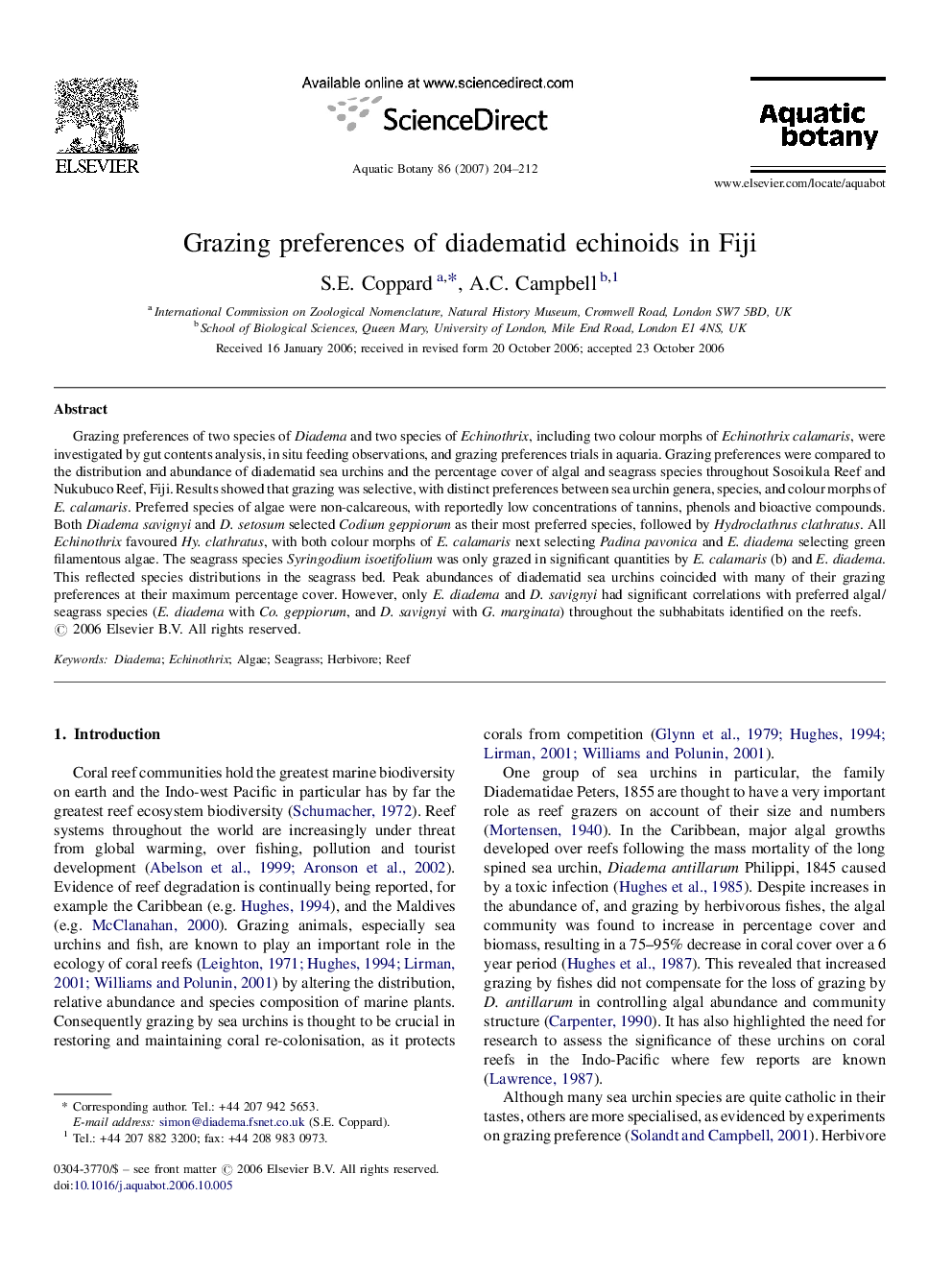| Article ID | Journal | Published Year | Pages | File Type |
|---|---|---|---|---|
| 4528551 | Aquatic Botany | 2007 | 9 Pages |
Grazing preferences of two species of Diadema and two species of Echinothrix, including two colour morphs of Echinothrix calamaris, were investigated by gut contents analysis, in situ feeding observations, and grazing preferences trials in aquaria. Grazing preferences were compared to the distribution and abundance of diadematid sea urchins and the percentage cover of algal and seagrass species throughout Sosoikula Reef and Nukubuco Reef, Fiji. Results showed that grazing was selective, with distinct preferences between sea urchin genera, species, and colour morphs of E. calamaris. Preferred species of algae were non-calcareous, with reportedly low concentrations of tannins, phenols and bioactive compounds. Both Diadema savignyi and D. setosum selected Codium geppiorum as their most preferred species, followed by Hydroclathrus clathratus. All Echinothrix favoured Hy. clathratus, with both colour morphs of E. calamaris next selecting Padina pavonica and E. diadema selecting green filamentous algae. The seagrass species Syringodium isoetifolium was only grazed in significant quantities by E. calamaris (b) and E. diadema. This reflected species distributions in the seagrass bed. Peak abundances of diadematid sea urchins coincided with many of their grazing preferences at their maximum percentage cover. However, only E. diadema and D. savignyi had significant correlations with preferred algal/seagrass species (E. diadema with Co. geppiorum, and D. savignyi with G. marginata) throughout the subhabitats identified on the reefs.
